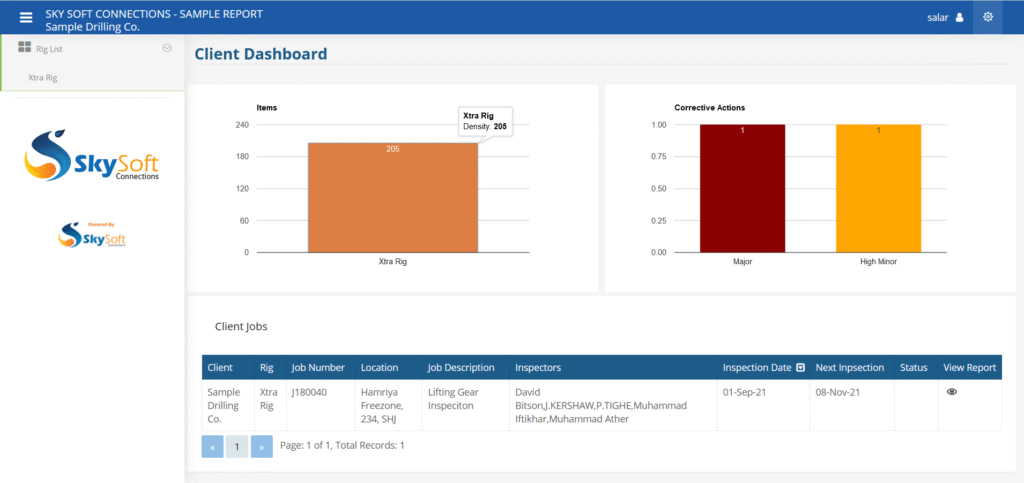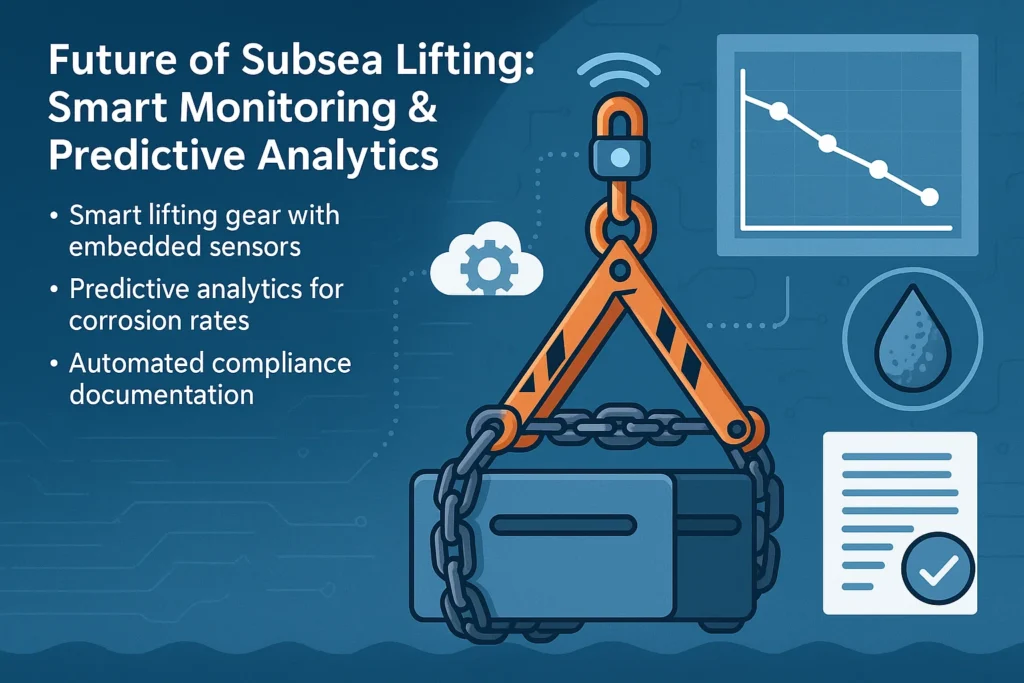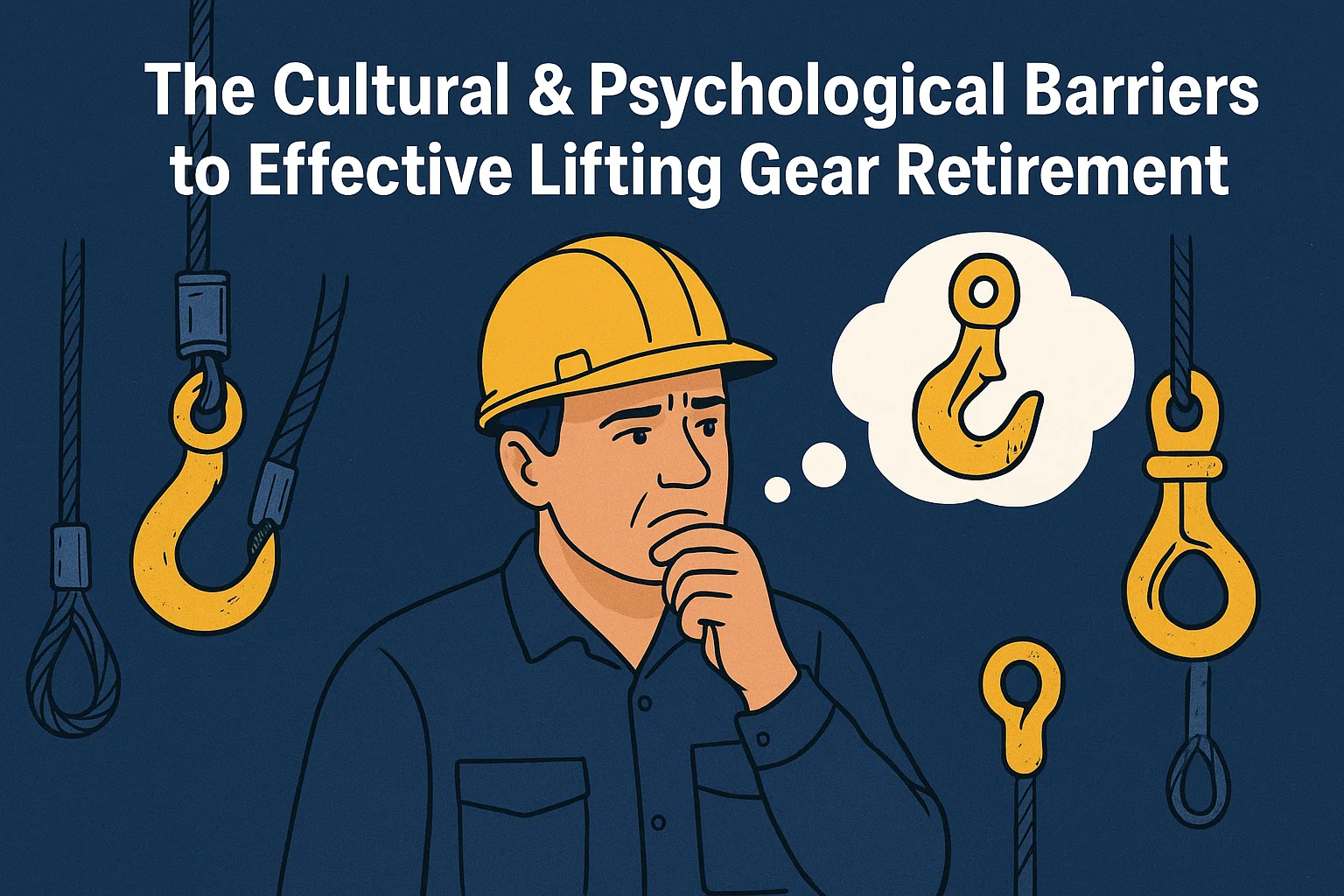Inspections Track Software For Oil and Gas Inspection Industry

In the world of offshore and subsea operations, subsea lifting plays a vital role in ensuring the safe transport, installation, and retrieval of heavy underwater assets. From pipelines and manifolds to anchors and subsea modules, every lift comes with unique technical challenges.
Three key forces—buoyancy, hydrodynamics, and corrosion—interact constantly, shaping how subsea lifting is planned, executed, and inspected. Mismanaging any one of these elements can lead to costly downtime or catastrophic failures.
This article looks at the science of subsea lifting. It discusses the complex forces involved. It also shows how digital inspection tools, like Inspections Track Software, help oil and gas operators. These tools improve safety, reliability, and compliance.
Subsea lifting means carefully raising or lowering equipment and structures underwater. This is often done with cranes, winches, or special lifting frames. It’s a critical operation in:
These operations demand precise control over forces acting on the object, especially in deep water.

Buoyancy is the upward force that acts opposite to gravity.
In subsea lifting, engineers calculate net buoyant weight to ensure equipment neither sinks uncontrollably nor floats away.
| Parameter | Description | Impact on Lifting |
|---|---|---|
| Submerged Weight | Weight of the object minus buoyant force | Determines required crane capacity |
| Buoyant Force | Force due to water displacement | Reduces load on lifting equipment |
| Density of Seawater | Varies with temperature and salinity | Affects weight calculations |
A miscalculation here can strain lifting gear or cause unstable loads, leading to serious safety hazards.
Hydrodynamic forces arise from the movement of water around the lifted object. Waves, currents, and object geometry can create drag and lift forces, making loads swing or rotate unpredictably.
To minimize risks, subsea engineers use computational simulations and advanced monitoring systems during lifts.
While buoyancy and hydrodynamics are active forces, corrosion is a slow, destructive process that compromises the integrity of lifting components.
In saltwater environments, corrosion can:
Regular inspection and maintenance are crucial to detect early signs of degradation.
Manual inspection logs, spreadsheets, and paper reports make it difficult to track asset conditions over time. This leads to:
That’s where Inspections Track Software revolutionizes the process.
Inspections Track is a comprehensive digital inspection management platform built for the oil and gas industry. It centralizes inspection data, automates reporting, and ensures real-time visibility across subsea operations.

| Challenge | Solution by Inspections Track |
|---|---|
| Corrosion monitoring | Automated alerts for corrosion rate thresholds |
| Hydrodynamic stress tracking | Digital logs for load and force history |
| Documentation delays | Instant report generation and sharing |
| Safety compliance | Verified digital records for audits |
With its real-time insights and intelligent workflows, Inspections Track ensures every subsea lift meets the highest safety standards—before, during, and after execution.
To ensure safety and performance, organizations should follow a structured approach:
The future lies in IoT-enabled sensors and AI-driven inspection systems. When integrated with solutions like Inspections Track, these tools can predict failures before they occur—turning reactive maintenance into a proactive strategy.

These advancements enhance operational efficiency, reduce downtime, and improve safety performance.
Subsea lifting operations exist at the crossroads of buoyancy, hydrodynamics, and corrosion—three forces that define the safety and reliability of every subsea project.
By integrating modern digital tools like Inspections Track Software, oil and gas companies can overcome these challenges through smarter planning, continuous monitoring, and data-driven decision-making.
In the depths of the ocean, precision is everything — and with Inspections Track, precision meets performance.
Read more : overcoming barriers in lifting gear retirement
Subsea lifting involves moving heavy equipment underwater using cranes, winches, or lifting frames during offshore construction or maintenance operations.
Buoyancy reduces the apparent weight of objects underwater, while hydrodynamics introduces forces like drag and lift that can make the load unstable if not managed correctly.
Corrosion weakens metal components such as slings, chains, and shackles, increasing the risk of failure during lifting operations. Regular inspections help detect and prevent damage early.
Inspections Track simplifies inspection management, automates reporting, and provides real-time data insights to help teams detect issues like corrosion or fatigue before they lead to failures.

Introduction In high-risk industries like oil and gas, equipment safety is not just about maintenance — it’s about timely retirement. Yet, despite clear inspection data and regulatory requirements, many teams hesitate to retire lifting gear…

When it comes to safety in the oil and gas industry, few components are as crucial—and as quietly dependable—as the Pressure Relief Valve (PRV). Often overlooked until a crisis strikes, PRVs act as silent guardians,…
SkySoft Connections provides quality IT services around the globe. Our services begin with experience and end with dedication, ensuring innovation and reliability
© Copyrights, 2024 All Rights Reserved Skysoftconnections
Contact us
Get notified about new articles